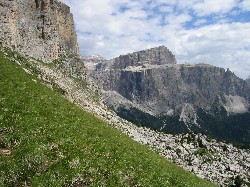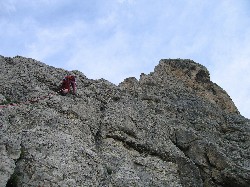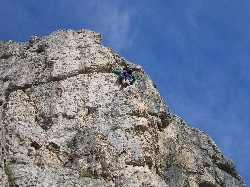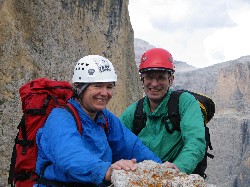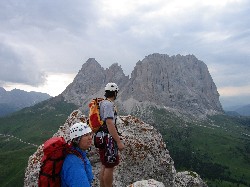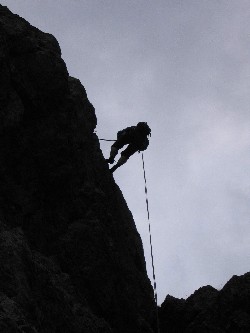|
The Sella Towers are among the most accessible alpine rock climbs anywhere. A fifteen-minute hike from the Sella Pass
highway gets one to the start of any route on the First Tower. The routes are accordingly popular, and the limestone is
accordingly polished. Still, the climbs are amazingly impressive. The Trenker crack in particular is a route that I
could not read enough about as a kid. (Luis Trenker was a popular climber and film maker in the first half
of the 20th century.) Forty years later I finally climbed it, so never say never.
A word about alpine ratings .
Routes: | Steger/Holzner (IV+) |
| | Trenker (V-) |

 |
References: | A. Köhler and N. Memmel, Classic Dolomite Climbs
(The Mountaineers 1999) |
| | S. Stuflesser, Klettern rund ums Sellajoch
(Lochner Verlag 1997) |
|
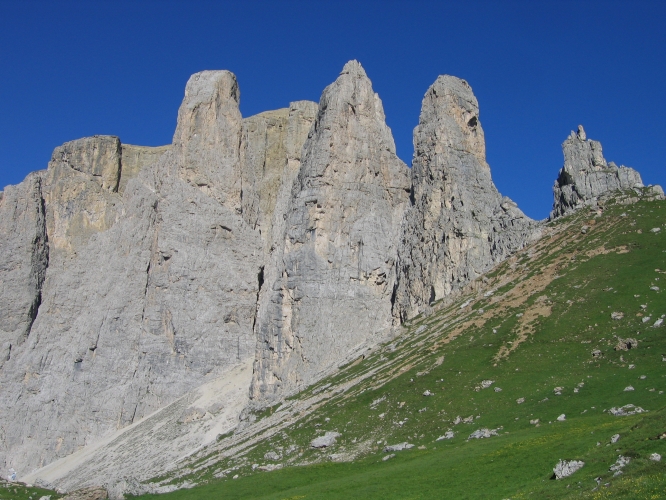
The Sella Towers from the Sella Pass
|



 roundtrip from Sella Pass 4 hrs 30 mins
roundtrip from Sella Pass 4 hrs 30 mins
